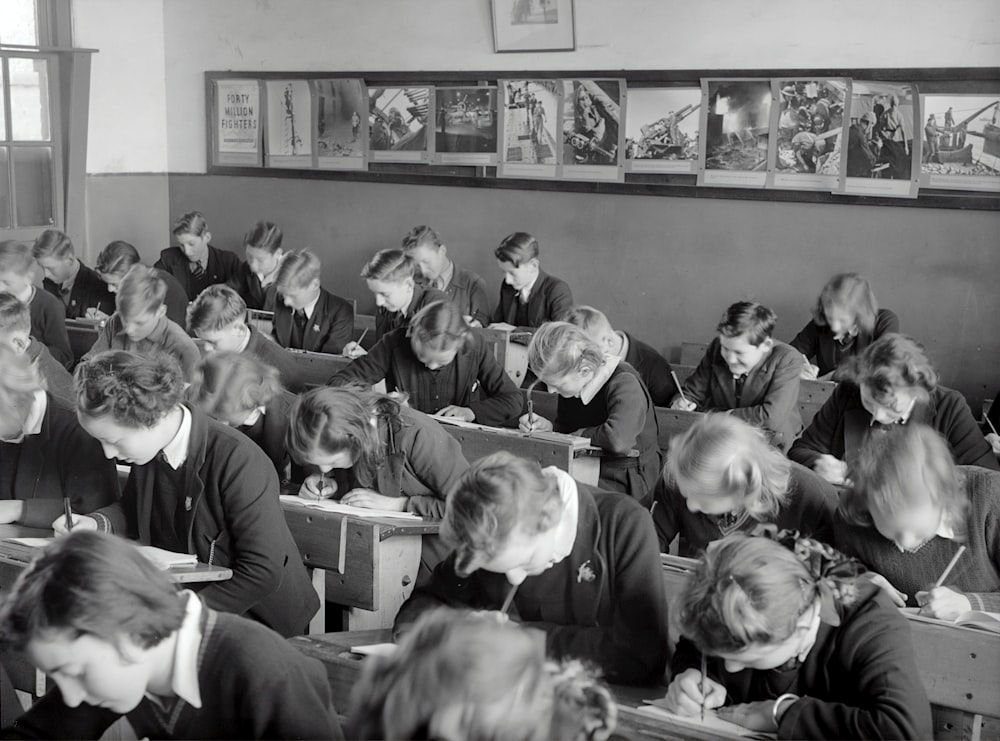Memories of Old School Days
I was inspired to write this after a discussion with school friends about school days many years ago. Things were so different to what students experience now, and students now cannot believe what we had to endure.
In primary school we had no official uniforms in those days, but girls often wore navy or black tunics with a white blouse underneath. The only shoes available were brown laceups which we cleaned daily.
School Milk
One thing that often comes up in conversations about school in the “olden days” is the school milk program, which started in 1951 by the Menzie’s government, and went on until Gough Whitlam was Prime Minister and it was stopped in 1973, due to the high cost of the program at the tie.
Milk in glass bottles with silver foil caps was delivered to schools in crates, with enough for all the students. There was limited or no refrigeration available in those days, so many students of that time remember the warm milk, especially in summer. It was initially about providing good nutrition to young people after World War II, which saw a shortage of quality healthy foods. (There is discussion about bringing a similar program back to schools for the nutritional value for young people and to assist the dairy industry.)

Old School Days
School Rules
Discipline was rather scary in those days as teachers were able to hit students with “the cane”. Girls would get a sting from it on their hands, while boys would get slapped on their bums. (This was still part of discipline in some schools until around 1979.)
Teachers were addressed as Mr, Mrs, or Miss in those days, and many strict teachers were almost feared.
Most mornings we would stand in the school “quadrangle” for assembly when we would start with the national anthem which was “God Save the King” until the death of King George VI in 1952, and “God Save the Queen” when Queen Elizabeth was crowned shortly after the King’s passing.
Getting to School
There were few cars in those days, so most students walked to school or rode bikes. I caught a steam train to the first school I attended – Hopetoun at Brighton in Adelaide – I was 4 years old. The next school was Brighton Primary School which I attended for about four years – I would walk, often with another student Roger, around 2 kms through bushland to get to school. When Oaklands Primary School started, it was closer to home so I went there. Usually, I walked with my sister or friends.
After primary school, I attended what was then called Brighton High School for three years, and I rode my bicycle to and from school. My last year of high school was Adelaide Girls High school right in the centre of the city of Adelaide and it was a steam train ride, and a walk to the school through the city streets.
Writing, Arithmetic and Spelling
What was referred to as “The three R’s” was the focus of school in those days. We used lead pencils to write and learned how to write cursive writing, mostly with our pens with inik. There was a hole in the timber desks, where the ink was, and we would dip our pens (with a wooden handle with metal nib) to refresh the ink.
We also studied geography, history, English and the girls did “domestic science” – sewing, cooking and skills for housework, and the boys did “woodwork” at Primary School, and at high school, other subjects were on the list of subjects – Latin, French, Anatomy and physiology, Typing, Shorthand, and Bookkeeping and more.
Mental as anything
Most mornings in primary school we would have a session of “mental arithmetic) and spelling. The teacher would give us verbally a calculation to work out – usually about 10, and we would mark the work of the student sitting beside us, and then would be spelling – the teacher would say 10 words, one at a time, and we would have to get them corrected by the other student. That is the way we learned how to spell and work out calculations (without help from tools.)
School Excursions
The only excursions I experienced were two visits to the Coca-Cola factory near the city. I do recall a bus trip to Anzac Highway in 1954, when Queen Elizabeth and the Duke of Edinburgh visited Australia after the Queen’s coronation. We stood at the side of the highway with thousands of people until they passed in a motor vehicle, waving at everyone.
Guy Fawkes
The story of Guy Fawkes goes back to 1605, and was celebrated every year on November 5th, until the 1980’s. A huge bonfire would be lit up in a park and people would come with fireworks and crackers, and there would be great displays of the fireworks going off. It was ceased in the 1980’s as too many people were being injured by the fireworks. Some of us remember the exciting nights of celebrations.
The School Bell
Schools had a large brass bell that was rung at the beginning and end of every lesson. A student who was the bell monitor or a teacher would ring the bell. It was a demanding task!
Cooling and Heating the Classroom
Air conditioning was certainly non-existent in our schools, and fans were not inuse, during my school days. We opened the windows and hoped for a cool breeze in the hot summer days of South Australia. When winter came we had a fire in a “fireplace” – an enclosed metal and glass contraption with a small door where someone would add pieces of wood to keep the fire going and keep the room warm.
No, there was no reverse-cycle air conditioning in those days.

